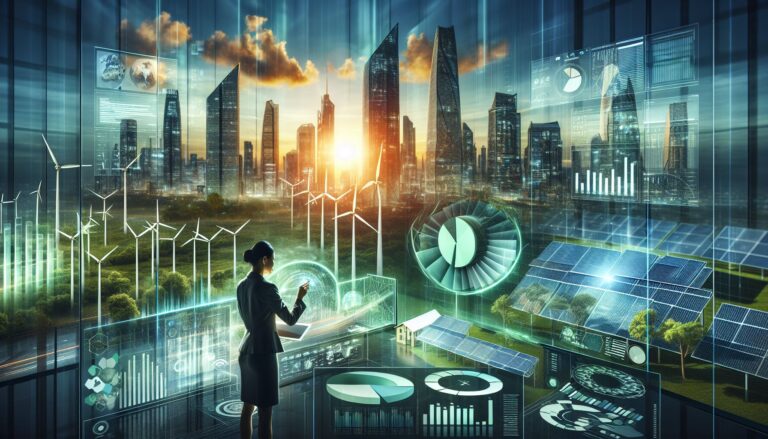It is no longer a secret that our planet is undergoing dramatic changes. From rising temperatures to extreme weather events, the environment has become a focal point of concern for individuals, corporations, and governments alike. However, within this panorama of well-known environmental issues, hidden trends lurk that are equally important, yet often overlooked. Today, we embark on a journey to unravel these invisible catalysts that have the power to shape our world.
In recent years, the business world has witnessed a remarkable shift towards sustainability. Companies across industries have recognized the importance of environmental responsibility, not only for the planet but also for their long-term viability. This paradigm shift has given rise to a new era of innovation and adaptation, where businesses are compelled to find sustainable solutions that can simultaneously drive growth.
One of the prevailing trends in the business world is the push towards a circular economy. By rethinking production processes and maximizing resource efficiency, companies are not only reducing waste but also creating new revenue streams. Through initiatives such as product recyclability, extended producer responsibility, and the use of renewable materials, businesses are forging a path towards a more sustainable future.
Another crucial trend is the integration of sustainable practices into supply chains. From farm to fork, companies are recognizing the importance of transparency and accountability throughout the entire value chain. This entails reducing carbon emissions, eliminating deforestation, and ensuring fair labor practices. The adoption of sustainable sourcing practices not only safeguards the environment but also enhances consumer trust and brand reputation.
Moreover, as technology continues to advance, the role of digitalization in environmental sustainability cannot be understated. Smart grids, Internet of Things (IoT)-enabled sensors, and data analytics are empowering individuals and organizations to make data-driven decisions to reduce energy consumption and waste. With the proliferation of digital solutions, individuals can monitor their energy usage in real-time, while industries can optimize their operations, leading to significant environmental gains.
In observing these trends, it becomes evident that they have profound implications for the future. The integration of sustainability into business strategies not only mitigates environmental risks but also presents new opportunities. Companies that are proactive in addressing environmental challenges can differentiate themselves from their competitors, attract eco-conscious consumers, and foster innovation.
However, challenges remain. Despite progress made in sustainability practices, urgent action is still needed to tackle climate change, biodiversity loss, and resource scarcity. Businesses, governments, and individuals need to collaborate and pool resources for meaningful change to occur. This involves setting ambitious targets, investing in sustainable technologies, and implementing robust policies that incentivize environmental stewardship.
In conclusion, the invisible catalysts shaping our world today are forcing businesses to reevaluate their practices and embrace sustainability. The adoption of circular economy principles, the integration of sustainability into supply chains, and the leveraging of technology are all pivots that not only benefit the environment but also offer substantial business advantages. It is imperative for stakeholders to recognize the broader implications of these trends and take collective action to secure a sustainable future. Only through collaboration and mindful decision-making can we navigate towards a regenerative and resilient world for generations to come.

